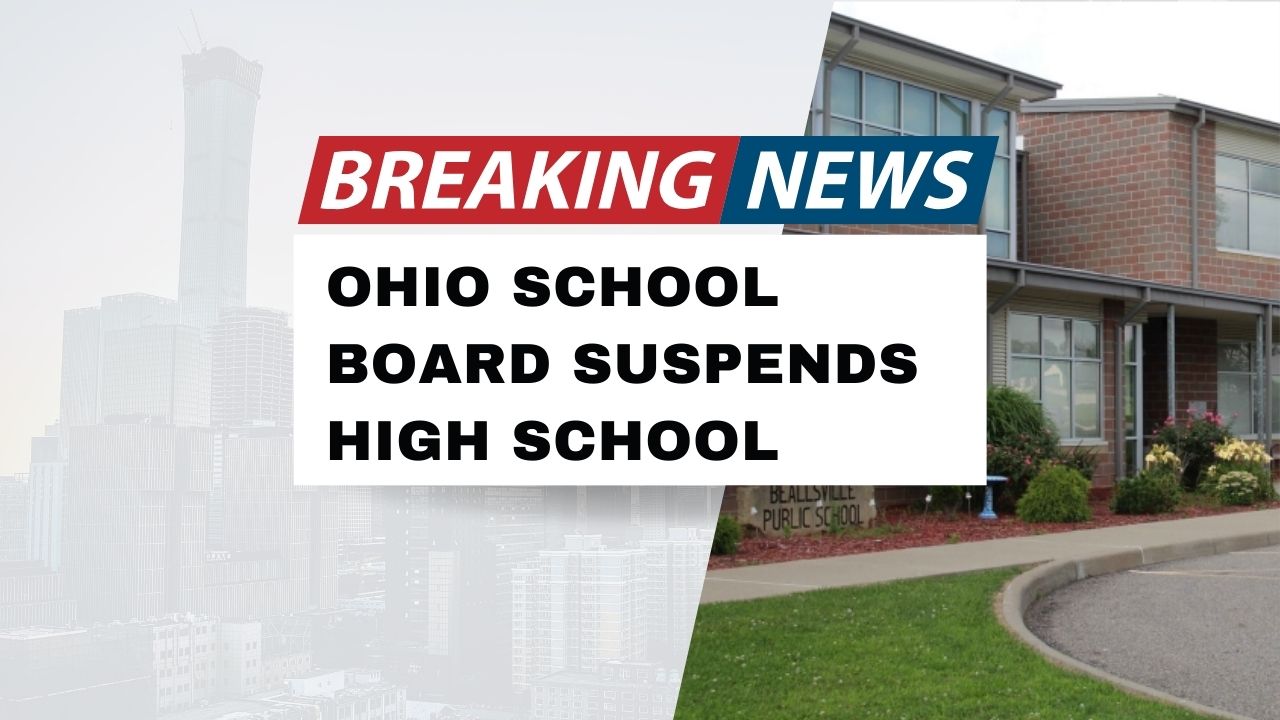One morning in Ohio, students walked into their school. The place felt normal. But then the news hit. Their high school was suspended. Classes were gone. Grades shut down. The Switzerland of Ohio Board of Education made the call. Some said it was about falling numbers. Others whispered about money problems. Whatever the reason, parents felt helpless.
Students were confused. A whole community was shaken. This isn’t just about a building closing. It’s about families, the future, and a sudden hole in small-town life.
In the following content, you’ll find why it happened, what rules allowed it, and what comes after.
| Category | Statistic |
|---|---|
| Total Suspension/Expulsion Occurrences | Over 394,000 cases statewide |
| Out-of-School Suspensions | 53% of total exclusionary discipline cases |
| In-School Suspensions | 29% of total exclusionary discipline cases |
| Expulsions | 1.13% of total exclusionary discipline cases |
| Economically Disadvantaged Students | Accounted for 83% of all out-of-school suspensions |
| Black Male Students | 4.3 times more likely to be suspended or expelled than white male students |
| Black Female Students | 6 times more likely to be suspended or expelled than white female students |
| Students with Disabilities | Represented 30% of out-of-school suspensions, though they make up 17% of the student population |
| Chronic Absenteeism Rate | 26.8% of students were chronically absent (missed more than 10% of school days) |
| SAFE Act Impact | Reduced out-of-school suspensions for non-violent behavior in grades Pre-K–3 from 39,000 to 12,000 annually |
What exactly happened when the Ohio school board suspended a high school?
It started with a vote. Quiet on paper. Loud in real life. The Switzerland of Ohio Board of Education decided to shut down Beallsville High School’s grades 9 through 12. Not the whole building. Younger students still stay. But the high school program was gone overnight.
The announcement hit fast. No long warning. No time to prepare. Students left wondering where they’d go. Parents scrambling for answers. Teachers facing sudden transfers. A timeline that felt rushed. First the vote, then the closure notice, and by the end of the week, a school’s heartbeat stopped.
Why did the Ohio school board take this decision?
The board gave reasons. Falling enrollment. Too few students in the halls. Money running thin. They said keeping the high school open made no sense anymore.
But people questioned it. Some thought it was about budgets, not children. Others said it was politics. A fight between keeping tradition alive and cutting costs.
And this isn’t the first time. Other Ohio schools have faced the same fate. When numbers drop, or funding dries up, boards act. Sometimes quickly. Sometimes without listening. The result looks the same. An empty school. A divided town.
How does Ohio law allow school boards to suspend schools or students?
There are rules. Not just sudden choices. Ohio law, Revised Code §3313.66, gives boards and principals power. They can suspend students. They can recommend closures. But there must be process. Notices. Hearings. The right to appeal.
History backs this up. In Goss v. Lopez (1975), the U.S. Supreme Court ruled that students can’t just be pushed out without due process. That case came from Ohio. A reminder that even discipline has limits.
So while boards hold authority, the law demands balance. Order must meet fairness.
What are the consequences for students and families?
The shock was real. Students suddenly without classrooms. Seniors wondering about graduation. Juniors worried about credits. Sports teams broken up. Clubs dissolved. Academics shaken.
Families felt the weight. New travel times to other schools. Kids split from friends. Parents stressed about their child’s future. Confusion everywhere.
Emotionally, it hit harder. Students lost a sense of home. Teachers felt displaced. Communities grieved like something was stolen.
Yes, there are options. Online learning. Transfers to nearby schools. But none of these replace the comfort of your own high school. The hallway you grew up in. The teams you cheered for. The teachers who knew your name.
How are parents and the community reacting?
Anger. Sadness. Confusion. That’s what came out first. Parents stood up at meetings. Voices raised. Some demanded answers. Others just cried.
Students shared feelings too. They talked about losing friends, sports, and memories. Teachers worried about jobs. The community split between those who supported the decision and those who swore it was wrong.
It became more than a school issue. It turned into a debate. Safety versus fairness. Money versus memories. Rules versus real lives.
In the end, one thing was clear. A high school was gone. But the fight over its meaning had just begun.
Are suspensions rising in Ohio schools?
The numbers say yes. Reports show suspensions are climbing again across the state. Not just in high schools. Elementary and middle schools too.
In 2022–23, Ohio schools gave out tens of thousands of suspensions. The Ohio Department of Education confirms the trend.
But here’s the bigger problem. Not all students face suspensions equally. Low-income families feel it the hardest. Black boys are suspended at four times the rate of white boys. Black girls? Six times more likely. Students with disabilities? Nearly a third of all suspensions, even though they are less than a fifth of the population.
Zero-tolerance policies play a role. One fight, one disruption, one mistake—and students are out. No second chances. No conversation. Just punishment. Critics call it the “school-to-prison pipeline.” Harsh rules that may do more harm than good.
What alternatives to suspension exist in Ohio?
Not every problem needs a suspension. Schools do have other tools.
One approach is PBIS (Positive Behavioral Interventions and Supports). It focuses on teaching better behavior instead of just punishing bad ones. Schools that use PBIS track fewer suspensions. More order. Less chaos.
Another path is restorative justice. When students break rules, they talk it out. Face the harm. Fix it if possible. It’s not soft, it’s about responsibility and healing.
Then there are smaller steps. In-school suspensions. Counseling sessions. Community service. These keep kids connected to school while still showing that actions have consequences. They don’t lose weeks of learning. They don’t feel pushed out.
The idea is simple. Discipline should teach, not just remove.
What reforms are being discussed?
Ohio has already started. In 2018, lawmakers passed the SAFE Act. It banned out-of-school suspensions for non-violent kids in grades Pre-K through 3. The goal was clear—help children early, not punish them out of class.
But the conversation isn’t over. Advocates are pushing for more. Fairer rules. More consistent discipline across districts. Less bias. More support for teachers too.
There are louder calls now for equity and transparency. Parents want to know why one child is suspended while another is spared. Communities want rules that protect safety but also protect futures.
The debate keeps growing. Do schools exist to punish or to guide? Ohio hasn’t fully answered yet. But the pressure to change is real.
Conclusion: Ohio School Board Suspends High School
The suspension of an Ohio high school shows more than just a closed door. It shows how rules, money, and politics can collide with the lives of students and families. It proves that suspensions are not rare, they are rising, and they hit some groups harder than others.
The law gives boards the power, but it also demands fairness. The community feels the loss, the students carry the weight, and parents demand answers. Alternatives like PBIS, counseling, and restorative justice show there are better ways.
Reforms like the SAFE Act prove change is possible, but not enough yet. The outcome is clear, suspensions may solve problems for schools in the short term, but for students and towns, the cost is heavy. The real challenge is finding discipline that protects order without breaking futures.







